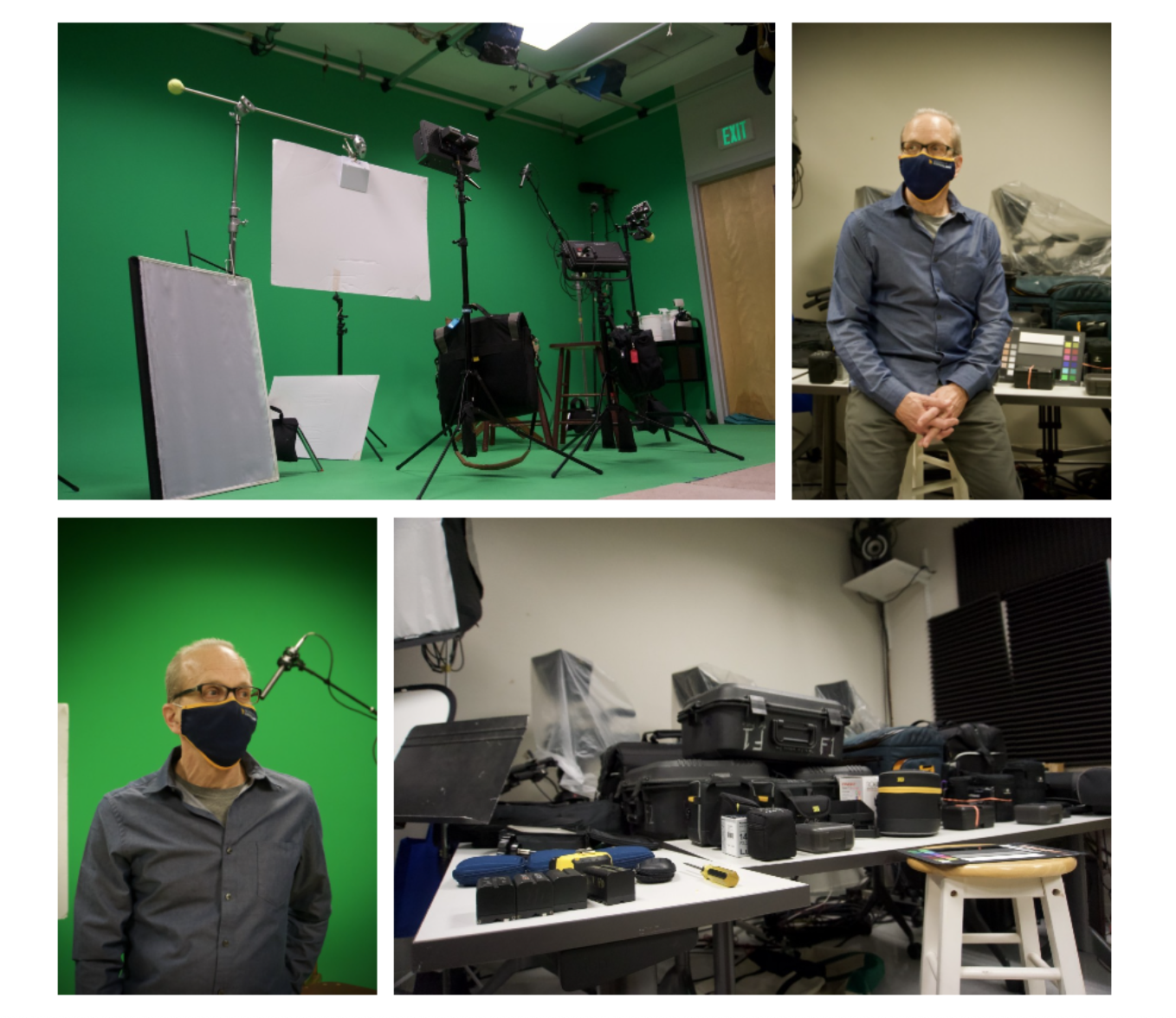Tucked between the Sullivan Gym and the empty shell of the Woodbury Campus Center sits a building that goes relatively unnoticed. If you don’t know what you’re looking for, it blends right into the gym, and you would never think it’s the home for a whole media studies major, as it sits within that little yellow building. 21 Durham Street: USM’s Production Center. Made up of a full production lab, a classroom, a computer room, a recording booth, and solo editing stations, the production center provides students with everything they need to pursue making media. Behind the studio is its manager, Nat Ives. “What’s my official job title… Studio Manager? Lab Instructor?” Ives pondered. “I do a little bit of everything here. I work with the media studies faculty teaching the hands-on aspect of video and audio production.”
Ives is going into his 27th year working for the University. He started here at the school of business quickly seizing a work-study position at USM TV as a production assistant; “They hired me to do audio production which I’m familiar with because I’m a musician, but I had never really done video production. I took a few classes,” he explained, “but most of it was hands-on training in the studio.” Ives found a lot of opportunities within the USM production program. After completing his fourth year of work-study and graduating, Ives landed himself a job at the University. “It just happened,” he said. “I was a work-study student for four years and the month I graduated, somebody left a job. I was looking for something secure, so I couldn’t not try.”
Ives is an important resource within the production center. His long-term experience managing the lab, as well as his knowledge of production theory and practice, make him an indispensable part of the program. To Ives, the most important part of the program is the space and the resources the production center offers.
Ives has had the opportunity to see the production center and media studies curriculum grow over the years. The program officially moved to campus in 2010, which helped it gain interest with new incoming students. This increased interest in the program, allowing for the expansion of the curriculum. “The key thing is that it has grown. It’s more concentrated now as far as fields of interest, and much more diverse,” Ives shared. “I’d also say it’s become more integrated; you have classes on special effects, genres, video production, audio production, screenwriting, all in one curriculum.” Students entering the media studies program can declare a concentration and pursue any field of interest within the curriculum whether it be in production, writing, or media ecology.
What the production center has also done is create a community for students involved in the media studies program to gain access to resources and work opportunities. It has also allowed them to network with other students, faculty, and the greater Portland community. In early 2020, the production center faced the possibility of moving across campus, disrupting the curriculum, and uprooting students from their space. As a response, students under the USM Communications Media Studies Student Coalition petitioned the University. On February 7th
2020, they spoke before the council at the USM Town Hall in favor of keeping the production center where it is. “That really blew my mind, the students who came together like that. I mean, those are some bright young people, and they cared that much about this space,” Ives said.
Ives lists that another big change for the production center, much like for the rest of the University, has been adapting to COVID-19. Media production is hands-on in a very literal sense; students are frequently handling equipment, working in groups, and engaging with each other. This has all been made difficult due to COVID protocols. “Even framing and lighting a scene has changed,” Ives described. “Students can’t be closer than 6 feet from each other, so we have to decide where they need to be positioned in the frame, what kind of lens is needed to make them appear closer, and how we can consistently light a larger space.” He also has to work hard to keep such a large inventory of equipment clean for all students within the program to use.
When discussing media production it’s impossible to finish without first asking a film nerds least favorite question: What is your favorite movie? Ives’ response was anticipated. “Oh man that’s the worst,” he laughed. “I don’t have just one. Definitely In the Heat of the Night, The Conversation, and Apocalypse Now. Kind of out there, but I’ll always be a fan of The Wizard of Oz, too.” For more information regarding the media studies and production program, please visit https://usm.maine.edu.

